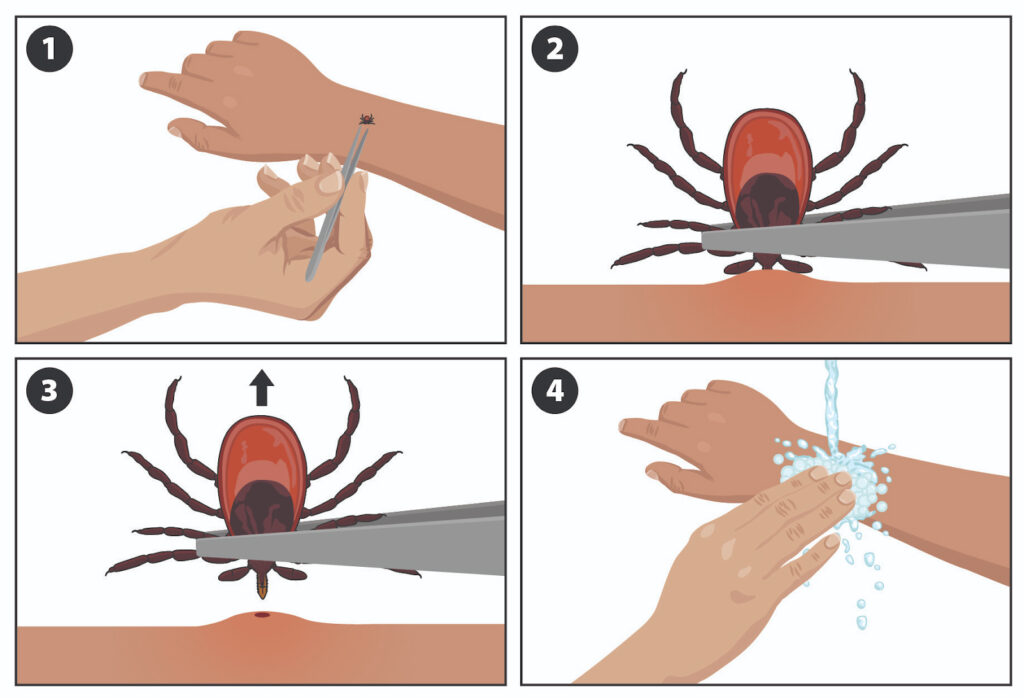For the Tomahawk Leader
LINCOLN COUNTY – The Lincoln County Health Department (LCHD) is reminding the public that there are many tickborne diseases seen this time of year.
“Ticks are typically most active in Wisconsin from May to November,” LCHD said. “Most tickborne diseases in Wisconsin are spread by the black-legged tick (also known as the deer tick), including Lyme disease, Anaplasmosis, Babesiosis, and Ehrlichiosis.”
LCHD noted that a single tick can spread more than one tickborne disease.
“Preventing tick bites, removing ticks early, and seeking medical attention if you have symptoms are key ways to reduce your risk of tickborne diseases,” LCHD stated.
Symptoms of tickborne disease usually begin to occur within a month, and can range from mild to severe.
“Even if you do not remember being bitten by a tick, a fever or rash may be the first sign of Lyme disease,” LCHD said. “Call your doctor right away if you have any symptoms. If tickborne diseases are not treated, it can lead to serious illness and complications.”
Common symptoms of tickborne diseases maybe include:
- Fever
- Chills
- Muscle Aches
- Joint Pain
- Fatigue
- Headache
- Stiff Neck
- Nausea
- Vomiting
- Rash (not in all tickborne diseases)
- General feeling of illness (malaise)
LCHD said individuals can take steps to avoid tick bites and lower their chance of getting tickborne diseases by taking the following steps:
- Use EPA-registered insect repellents. Learn more at www.epa.gov/insect-repellents. Wear a long-sleeve shirt and pants while outdoors. Light colored clothing makes ticks easier to spot.
- Avoid tick-heavy areas. Ticks like to live in tall bushes and other vegetation. When walking on trails, stay in the center and do not go off into the brush.
- Check your entire body after being outside, even if you were only in your yard.
- Tumble dry your clothes on high heat for 10 minutes to kill any ticks that may have come in on your clothes after being outdoors.
- Prevent ticks on your pets. Try to not allow them in tick-infested areas. Check your pet for ticks right away. While a vaccine can prevent Lyme disease in pets, it will not stop your pet from carrying infected ticks into your home. Speak with a veterinarian about tick treatment for your pets.
“Deer ticks are small and may be difficult to find, so tick checks must be done on all parts of the body carefully and thoroughly,” LCHD stated. “Pay special attention to areas where ticks tend to hide, such as the head, scalp, and body folds (armpit, behind the knee, ears, belly button, between legs).”
LCHD noted that removing ticks within 24 hours in essential and provided the following instructions for tick removal:
- Using tweezers, grab the tick as close as possible to the skin and pull upwards (away from the skin).
- Do not twist, yank or burn the tick during removal.
- Clean the bite site and your hands with rubbing alcohol or soap and water after removing the tick.

To learn more about the different types of diseases spread by ticks, visit the Department of Health Services (DHS) website at www.dhs.wisconsin.gov/tick/index.htm.
